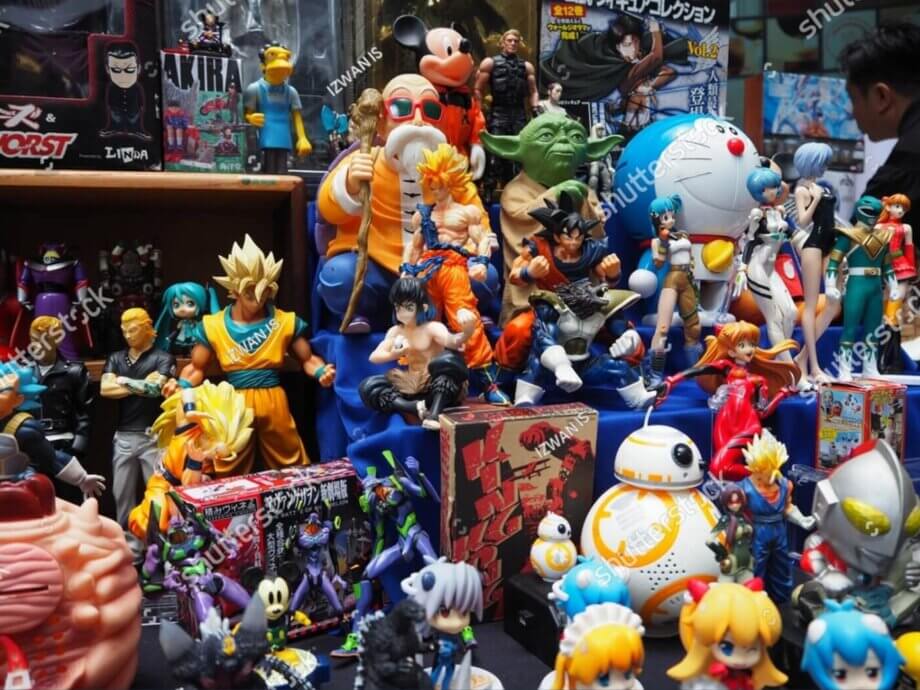Japan’s Ambitious Crackdown on Counterfeit Anime Goods
Japan, renowned as the birthplace of anime, manga, and a vibrant creative industry, is taking decisive action to protect its intellectual property (IP) on a global scale. The Japanese government has unveiled a comprehensive strategy to combat the proliferation of counterfeit anime merchandise overseas, a move that signals both the growing economic importance of the content industry and the mounting challenges posed by international piracy and counterfeiting.
- Japan’s Ambitious Crackdown on Counterfeit Anime Goods
- Why Is Counterfeit Anime Merchandise a Major Concern?
- Japan’s New National Strategy: Key Measures and Goals
- International Cooperation: Focusing on China and Beyond
- Legal and Regulatory Reforms: Strengthening Enforcement
- The Scale and Impact of Copyright Infringement
- Industry and Community Responses: Innovation and Education
- Challenges Ahead: Enforcement, Technology, and Globalization
- Broader Implications: Protecting Japan’s Creative Legacy
- In Summary
This initiative, part of the newly established Entertainment and Creative Industries National Strategy, aims to safeguard the interests of creators, studios, and legitimate businesses while supporting the global expansion of Japanese content. The plan is multifaceted, involving international cooperation, legal reforms, technological innovation, and industry support measures.
Why Is Counterfeit Anime Merchandise a Major Concern?
The global popularity of Japanese anime and manga has fueled a massive market for related goods, from figurines and apparel to posters and collectibles. However, this popularity has also attracted counterfeiters who produce and distribute fake merchandise, often of inferior quality, without authorization from rights holders. The scale of the problem is staggering: industry estimates suggest that losses from plagiarism and counterfeiting exceed ¥1 trillion (over $7.5 billion USD) annually, with much of the damage occurring outside Japan’s borders.
Counterfeit goods not only undermine the revenues of legitimate creators and companies but also pose risks to consumers. Fake products may lack safety standards, especially when it comes to items like toys, electronics, or cosmetics. Moreover, the profits from counterfeit sales can fund organized crime, further complicating enforcement efforts.
Japan’s New National Strategy: Key Measures and Goals
The Japanese government’s response is both ambitious and comprehensive. The Entertainment and Creative Industries National Strategy, announced by the Ministry of Economy, Trade and Industry, sets a bold target: to triple annual overseas sales of Japanese content to ¥20 trillion (about $138 billion USD) by 2033. Achieving this goal requires not only promoting legitimate exports but also curbing the flow of counterfeit goods that erode market trust and value.
The strategy outlines 100 measures across 10 priority areas, including:
- Deepening cooperation with foreign authorities to investigate and prosecute distributors of counterfeit anime goods, with a particular focus on major markets such as China.
- Partnering with the Content Overseas Distribution Association (CODA), an organization dedicated to fighting piracy and copyright infringement abroad.
- Supporting the global expansion of video games by creating a database of legal regulations, cultural norms, and customs in various countries to help Japanese companies navigate foreign markets.
- Promoting manga overseas through the development of AI-powered translation tools, making it easier to provide official versions in multiple languages and reduce the appeal of pirated content.
- Revitalizing domestic bookstores, which serve as important sales channels for manga, by supporting their adaptation to changing market conditions.
- Improving working conditions for anime creators to address labor shortages and ensure sustainable production.
- Establishing a certification mark for anime produced under fair labor conditions, helping consumers identify and support ethically made content.
International Cooperation: Focusing on China and Beyond
One of the most significant aspects of Japan’s new approach is its emphasis on international collaboration. Counterfeit anime goods are often produced and distributed outside Japan, making unilateral enforcement difficult. By working closely with foreign authorities, especially in countries where counterfeiting is prevalent, Japan aims to identify and dismantle networks involved in the production and sale of fake merchandise.
China, as the world’s largest manufacturing hub and a major market for anime goods, is a particular focus. Joint investigations, information sharing, and coordinated legal action are expected to enhance the effectiveness of crackdowns. The government also plans to leverage the expertise of CODA, which has experience in monitoring piracy and facilitating takedowns of infringing content abroad.
Legal and Regulatory Reforms: Strengthening Enforcement
Japan has already taken steps to tighten its legal framework against counterfeit imports. Amendments to the Trademark Act, Design Act, and Customs Act in recent years have clarified that importing counterfeit goods, even for personal use, constitutes an infringement of IP rights. Customs officials are empowered to seize suspected counterfeit items at the border, and penalties for commercial importers can include imprisonment and hefty fines.
According to Japan Customs, goods infringing IP rights are treated as seriously as firearms or narcotics, with importation strictly prohibited. The range of counterfeit items is broad, encompassing not only anime figures and merchandise but also clothing, electronics, and more. Consumers are advised to be vigilant, as even purchases from domestic online retailers may result in counterfeit goods being shipped directly from overseas.
The Scale and Impact of Copyright Infringement
Copyright violations in the anime and manga industry extend beyond physical goods. Online piracy, including unauthorized uploads of manga and “fast movies” (condensed versions of films), causes billions of dollars in losses each year. The challenge is compounded by the international nature of the internet, which allows infringers to operate from jurisdictions with weak enforcement.
Professor Kaoru Kobashi of Kindai University, an expert in IP rights protection, highlights the magnitude of the problem:
“The financial damage they incur for production companies and publishers is massive.”
Efforts to combat piracy include not only law enforcement but also industry-led initiatives. For example, publishers like Shogakukan have begun releasing official translations online in collaboration with overseas fans, aiming to outpace pirates and provide legitimate alternatives to consumers.
Industry and Community Responses: Innovation and Education
Japanese content producers are not relying solely on government action. Organizations such as CODA operate automated monitoring centers to detect and request takedowns of pirated content. In some cases, they work to freeze the bank accounts of operators of pirate sites, disrupting their financial operations.
There is also a growing recognition of the need for public education. Many individuals, especially younger fans, may not fully understand the implications of copyright infringement or the risks associated with buying counterfeit goods. Experts argue that raising awareness about IP rights and the value of supporting legitimate creators is essential for long-term change.
Creative responses to counterfeiting have emerged as well. Some companies are experimenting with new business models, such as offering exclusive merchandise or experiences that are difficult to replicate. Others are leveraging technology, including blockchain, to authenticate products and assure consumers of their legitimacy.
Challenges Ahead: Enforcement, Technology, and Globalization
Despite these efforts, significant challenges remain. The global nature of counterfeiting means that enforcement is often a game of “cat and mouse,” with infringers shifting operations across borders and exploiting legal loopholes. The rise of e-commerce platforms and social media has made it easier for counterfeiters to reach consumers directly, complicating detection and prosecution.
Technological advances, such as generative AI, present both opportunities and risks. While AI-powered translation tools can help legitimate publishers reach new audiences, the same technologies can be used by pirates to produce unauthorized versions more quickly. The government and industry must remain vigilant and adaptable in the face of these evolving threats.
Broader Implications: Protecting Japan’s Creative Legacy
The stakes in this battle extend beyond economics. Anime and manga are not only major export industries for Japan but also cultural touchstones that shape the country’s global image. Protecting the integrity of these creative works is essential for preserving Japan’s soft power and ensuring that future generations of artists and fans can continue to thrive.
By taking a proactive, collaborative approach, Japan hopes to set a new standard for IP protection in the digital age. The success of this strategy will depend on sustained commitment from government, industry, and consumers alike.
In Summary
- Japan has launched a comprehensive strategy to combat counterfeit anime goods overseas, aiming to protect intellectual property and support the global expansion of its content industry.
- The government is deepening cooperation with foreign authorities, especially in China, and partnering with organizations like CODA to investigate and prosecute counterfeiters.
- Legal reforms have strengthened enforcement against counterfeit imports, with severe penalties for commercial violators.
- The strategy includes support for video games, manga, and anime creators, as well as measures to revitalize domestic bookstores and improve working conditions in the industry.
- Copyright infringement remains a major challenge, with billions of dollars in losses from piracy and counterfeiting each year.
- Industry and community responses include technological innovation, public education, and new business models to outpace pirates and counterfeiters.
- The success of Japan’s crackdown will depend on international collaboration, technological adaptation, and ongoing public awareness efforts.












